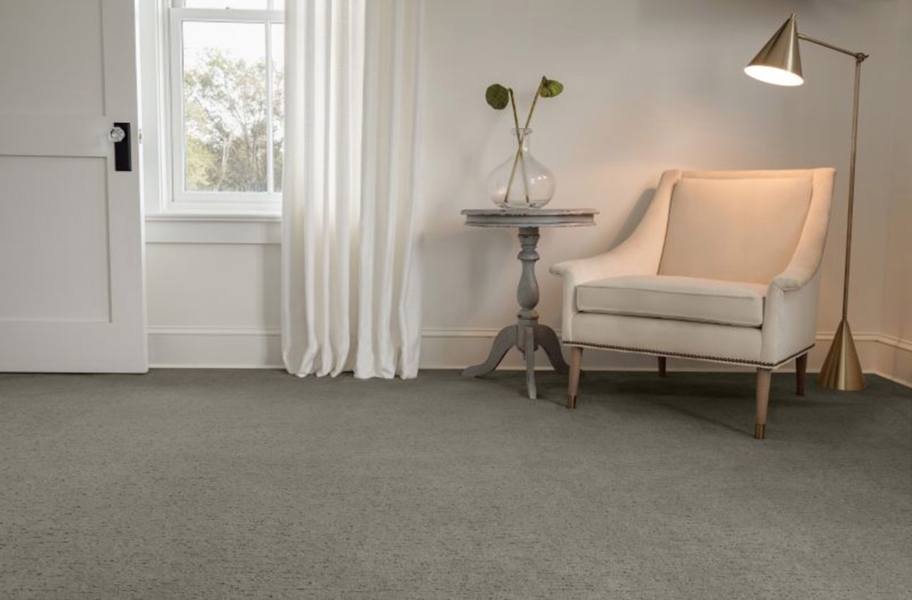
Carpet Padding Guide: Everything You Need to Know
By Kayla Haas
| Fact Checked By: Ashley De Zeeuw
Published: November 16, 2018 | Updated: April 7, 2021
Picking out the type of carpet you want can be fun. You get to decide on the feel, thickness, and color of the carpet. There are a ton of different options – carpet tiles, broadloom, Berber – which makes choosing carpet an exciting shopping experience! On the other hand, buying carpet padding can be a little different.
Carpet padding is less about matching your style, and more about meeting your daily needs. It’s the technical side of shopping for carpet. It’s also completely necessary, so there’s no way around it!
When you buy carpet from a big box store, you’ll find those folks tend to just throw in a random carpet pad and tell you it’s good, but we think carpet padding is more complicated than that.
It’s important to get the right carpet pad for your home. After all, carpet padding is responsible for keeping your new carpet durable and comfortable for years to come. With different key traits like thickness, weight, and type, there are a lot of options to pick from.
Not sure which carpet padding is for you? This guide will help you choose.
What is Carpet Padding?
Carpet padding is usually a foam underlayment specifically designed for installation under broadloom carpet. It serves a number of uses such as insulation, acoustics, support, and comfort.
Most carpet padding consists of polyurethane foam – the same stuff that’s in furniture, mattresses, and even car seats. This foam offers support to your carpet, allowing it to last longer in your home.
| Related Content >> How to Clean Carpet |
Why Do I Need Carpet Padding?
Carpet padding is necessary to experience the full benefit of owning carpeting. It’s what keeps carpet comfortable, but is also what maintains the life of your carpet.
Carpet padding does a little more than adding some squish to your step. In fact, it does a lot more. Just how much? Let’s take a look.
Extends the Life of Carpet
That thick, luxurious carpet you bought won’t last without a carpet pad under it. Carpet padding helps maintain the look of your carpet as well as its overall life. The truth is, carpet installed without a pad just doesn’t last as long. That’s because there’s nothing behind it absorbing the shock of everyday wear and tear.
According to the Independent Textile Testing Service, carpet without a carpet pad under it resulted in a 19.3% loss in thickness after a 150-lb. weight was rolled over fibers 20,000 times. In contrast, a carpet with a carpet pad under it resulted in a loss of 5-10% during the test.
Having carpet padding helps reduce fiber crushing and keeps your carpet thicker, for longer.
Provides Comfort
A big selling point of carpet is that it’s comfortable and soft. The truth is, no matter how thick or tall your pile height is, a carpet pad is required to make that carpet as comfortable as possible.
Carpet padding absorbs the impact of your footstep, making it comfortable to walk on. It also helps reduce walking fatigue with its shock-absorbing properties.
Improves Acoustics
The reason why any underlayment is important is that it helps improve the acoustics of a home. Sound-absorbing materials are necessary for apartments, condos, and two-level homes. After all, nobody wants to hear other people stomping around!
Studies have shown that using carpet padding significantly increases impact noise ratings and results in measured noise reduction.
Thermal Insulation
Last, carpet padding helps provide some insulation to your home. If you live in a cold environment, carpet padding will help retain some of your home’s heat. If you live in a hot environment, carpet padding will prevent cool air from escaping.
The insulating properties of carpet padding keep your energy bill down and your home well-insulated.
| Related Content >> Carpet FAQ |
How Thick Should My Carpet Padding Be?
The two metrics to consider when choosing a carpet padding are thickness and weight. We’ll get to weight in a minute; first, let’s talk about thickness.
Unlike with other types of flooring, thicker doesn’t necessarily mean better in the carpet padding world. In fact, some carpet types do better with thinner padding.
In general, the thickness for carpet padding shouldn’t be more than ½”. For Berber carpets, the Carpet and Rug Institute recommends a carpet padding no thicker than ⅜”.
Let’s take a look at how thickness affects certain uses and types of carpet.
- High traffic areas: For heavy traffic areas, such as commercial settings, thicker carpet padding is not ideal. For these situations, you’ll want a thinner carpet pad with a heavier weight.
- Living rooms, bedrooms, and dens: These residential areas of the home are the perfect place to splurge on a thicker carpet padding.
- Berber carpet: A thick pad can actually damage thin carpet types, such as Berber. That’s because the thick carpet pad has too much “give” for a short-pile carpet. For this reason, you’ll want a thinner carpet pad.
Shop All Thickness Options:
What is Carpet Padding Weight?
Carpet padding weight, also called density, is the second most important factor you should consider when shopping for the perfect cushioning.
The weight is usually measured in pounds per cubic foot, and most carpet pads fall in between the 3-10 lb. measurement.
For the best bang for your buck, we recommend at least a 6-lb. pad for a residential carpet. For the best in durability and comfort, an 8lb pad will do the trick.
Shop All Weight Options:
| Related Content >> Underlayment Guide |
Features of Carpet Pads
Not all carpet pads are the same. Some come with extra benefits that can make your life easier, from vapor barriers to prevent moisture damage, to eco-friendly materials that support sustainability. Check out your options for these helpful extras!
Eco-Friendly
While many pads are made of foam, there are some options made from more sustainable materials, such as recycled plastic bottles. So not only are they adding insulation and softness underfoot, they’re keeping waste out of landfills in the process. Win-win!
SHOP ECO-FRIENDLY CARPET PADDING
Vapor Barrier
Spills happen sometimes, and because foam padding is so absorbent, it can soak up moisture quickly. That can lead to damaged flooring if you’re not careful. Fortunately, lots of carpet pads these days come with a vapor barrier. This protective layer can prevent spills and pet accidents from penetrating the cushion, with some products offering protection for up to 24 hours.
SHOP PADDING WITH VAPOR BARRIER
| Related Content >> What is a Moisture Barrier? |
Pre-Attached
It’s no secret that carpet rolls can be a bit of a pain to install, but with pre-attached padding, half of the work is already done for you. If you’re in the market for carpeting as well as padding, consider a carpet with an already attached pad to save yourself some time and effort.
Types of Carpet Padding
Okay, now that you’ve got the basics down, it’s time to talk about the many types of carpet cushioning.
There are a lot of different options, so we know how confusing it can be. Which carpet padding is best for your installation can depend on a number of different factors. Let’s take a look at your choices.
Rebonded Foam Carpet Pad
Rebonded foam carpet pads are the most commonly used carpet underlayment. How common? Well, according to the Carpet Cushion Council, 85% of total carpet padding produced in the United States is rebonded foam. Bob Clark, from the Carpet Cushion Council, says rebonded foam is a “significant recycling success story,” as it contains 100% recycled foam, saving billions of pounds of foam from the landfill.
Rebonded foam carpet pads are distinguished by their multi-colored appearance, which is the result of several types of scrap foam being bonded together. These offer the most value for your dollar and come in several different thicknesses and densities.
Pros
- Most popular choice: Sometimes the most popular choice isn’t the best choice, but in this case, it is! Bonded foam pads are popular for a reason – durability and value.
- Value: Speaking of value, bonded foam offers a wide range of prices, densities, and thicknesses, making it the biggest bang for your buck.
- Eco-friendly: Bonded foam carpet pads are the most eco-friendly of the carpet pads. They are made from 100% recycled foam.
- Durability: Bonded padding is highly durable, with many different options for density and thickness, so you can properly match your carpet pad to your carpet.
Cons
- Foot traffic: If you have an extremely high amount of foot traffic, such as in a commercial setting, you might consider something even more durable instead.
SHOP REBONDED FOAM CARPET PADS
Prime Foam Carpet Pad
Prime foam padding is made from “virgin” polyurethane foam, meaning it isn’t made from recycled materials. This is a denser form of the same foam used in furniture.
Prime foam padding comes from a large mass of foam that’s been sliced to be used as carpet cushioning. It tends to be more firm than other types of carpet padding, but it can sink quickly.
Pros
- Soft step: The air pockets in prime foam allow for a very soft step.
- Inexpensive: There is a lot of variety in density and thickness available, which can make this an inexpensive option.
Cons
- Air pockets: Remember those air pockets we just mentioned? Prime foam’s air pockets also collapse over time, making this a poor option for high traffic.
- Durability: Prime foam isn’t the best option for high traffic areas and the foam will collapse.
Memory Foam Carpet Pad
Memory foam carpet pads are essentially frothed foam, but with an extra element added to give it that signature memory foam feel. If you’ve ever laid on a memory foam mattress, you know that memory foam is incredibly soft and comfortable. A memory foam carpet pad will make your carpet just as soft to step on.
However, memory foam will squish over time, and that constant stretching of carpet backing will damage your carpet in the long run. This makes memory foam not ideal for any high-traffic situation.
Pros
- Comfort: Memory foam carpet pads are the most comfortable on the market. There’s a reason people love memory foam mattresses so much.
- Durability: Memory foam is as durable as frothed foam and bonded foam pads. However, it may not hold up as well under high traffic.
Cons
- Expense: This softness is going to come with a price tag. It’s more expensive than 100% recycled stuff.
- New: Memory foam is still on the newer side of the carpet pad industry. It’s hard to say how well this new foam will hold up over time.
Fiber Carpet Pad
This isn’t foam, but rather a combination of different types of fiber: nylon, polyester, felt, etc. Fiber pads are usually recommended for Berber carpet types, and may even be required to maintain the warranty. Don’t worry though, they’re very durable.
Fiber carpet pads aren’t super soft, but they are flat and dense, making them ideal for Berber carpet and other commercial carpeting. However, unless your warranty requires it, it’s not a top choice.
Pros
- Inexpensive: Fiber carpet pads tend to be the most inexpensive choices out there.
- Flat and dense: This type of carpet padding is ideal for looped carpet types or commercial carpeting. It gives some comfort to your carpet, but won’t damage low-pile carpet types.
- Traffic: Fiber pads can accommodate many types of traffic: low, medium, and high.
Cons
- Not comfortable: Fiber carpet pads aren’t the #1 choice when it comes to comfort. It’s picked usually for high-traffic situations and for warranty requirements.
- Natural fibers: Most fiber carpet padding can be found with synthetic fibers; however, a natural fiber pad can be prone to mold.
| Related Content >> Carpet Installation Cost Guide |
What Carpet Padding is Best for My Floor?
After this amount of information, you probably just want to know: what carpet padding is best for me?
Every individual situation is unique, of course, but we’d still like to give our best recommendation. Below we have common installation types and our best stats on what to buy.
Residential Carpet
Residential carpet installations are all about comfort. For this reason, you can purchase a thicker carpet pad. Here’s what we recommend:
| Carpet Pad Type | Density | Thickness |
| Bonded | 6.5lbs – 8lbs | 7/16” – ½” |
| Frothed Foam | 10lbs -12lbs | 7/16” – ½” |
Commercial Carpet
Commercial carpet installations usually focus on long-term durability. Because of this, a thinner, denser carpet pad is recommended. Sometimes, even a rubber roll underlayment is the best option for commercial carpet.
Remember, looped and Berber carpets require specific padding. Here are our recommendations:
| Carpet Pad Type | Density | Thickness |
| Bonded | 6.5 lbs | ⅜” |
| Frothed Foam | 12 lbs + | ¼” |
| Synthetic Fiber | 6.5 lbs | 3/10” |
| Rubber Roll | N/A | Varies |
Looped Carpet
Looped carpet refers most often to Berber carpet styles or other short pile commercial carpet types. For these installations, most manufacturers require synthetic fiber pads.
| Carpet Pad Type | Density | Thickness |
| Synthetic Fiber | 6.5 lbs | ¼” – 3/10” |
High Traffic
Last, we have high-traffic installations. Typically high traffic occurs in commercial settings, such as stores and offices. For these types of installations, a thin and dense pad is preferable.
| Carpet Pad Type | Density | Thickness |
| Synthetic Fiber | 6.5 lbs | 3/10” |
| Frothed Foam | 12 lbs + | ¼” |
| Bonded | 6.5lbs | ⅜” |
| Related Content >> How to Remove and Prevent Pet Urine Odor and Stains |
Carpet Padding FAQ
What Carpet Padding is Recommended for Berber Carpet?
Manufacturers of Berber carpet usually have specific requirements regarding carpet padding. Be sure to look at those requirements to prevent any void in warranty and to also get the most life out of your carpet.
In general, synthetic fiber carpet pads are recommended.
Can I Dry Wet Carpet Padding?
If carpet padding gets wet from spills, you may be able to dry it before any mold or mildew growth begins. Start by pulling up the carpet with pliers, and fold it away from the wet padding.
Position a fan near the carpet pad to dry it out, and sprinkle baking soda over the affected area to help absorb moisture and odor. Once it has time to dry out, vacuum up the baking soda and use a spray disinfectant on the padding and underside of the carpet. This will reduce the chance of mold or mildew.
Note: Sometimes, such as in the case of major flooding, the padding may absorb too much moisture and become unsalvageable. In these cases, you need to remove and replace it.
Is Carpet Padding Toxic?
Carpet padding that is CRI Green Label Certified is non-toxic and safe for homes with both kids and pets. The CRI Green Label Certification is given to materials that meet scientifically established indoor air quality standards. It is part of the Indoor Air Quality Testing Program to ensure that carpet, adhesives and carpet pads emit low emissions of volatile organic compounds (VOCs), to help improve indoor air quality.
Can I Reuse Carpet Padding?
It isn’t recommended to reuse carpet padding, since previously used products may have soils, stains, or even mold/mildew growth you’re not aware of. To ensure safety and air quality, it’s best to purchase new carpet padding when you buy a new carpet and make sure it is CRI Green Label Certified.
Can Carpet Padding be Recycled?
Clean, mold-free carpet padding can often be recycled wherever other foam products are recycled. However, they will not be accepted if they are soiled, stained, or moldy. If your padding has had water or fire damage, you should dispose of it instead of attempting to recycle.
How Do I Install Carpet Padding?
Installation of our Carpet pad installation is very easy and commonly DIYed. Just follow these steps.
- Start with a clean subfloor, checking to make sure it is clear of any debris.
- Roll out the underlay from a corner of the room, with the mesh on the bottom, orienting it perpendicular to the direction your floor will be installed.
- Roll out a second roll of underlayment and join the seams together.
- Tape the underlayment seams with a moisture-resistant tape. Note: When installing the underlayment in a basement or where a moisture barrier is required, we recommend extending the underlay 1-2″ up the sides of all walls.
- Continue installing the underlay, repeating the previous steps until the floor is completed.
- Where moisture is evident, install a vapor barrier to seal all seams that are not sealed with tape.
Then you’re done!
What Carpet Padding is Best?
The right carpet padding will depend on the kind of carpet you have, as well as the application. You’ll also need to consider thickness and density. For a good all-around solution, rebonded padding is a solid choice, because it is durable, affordable, and made off 100% recycled materials.
Conclusion
Choosing the right padding is an important step that can often be overlooked. Now that you know more about your options, you can make an informed buying decision that will benefit the life of your carpet. There are lots of products to explore. Ready to shop?











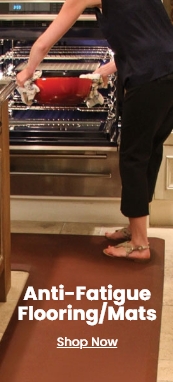

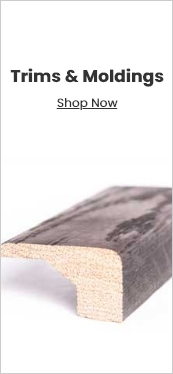


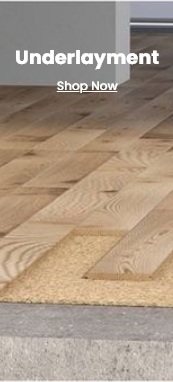


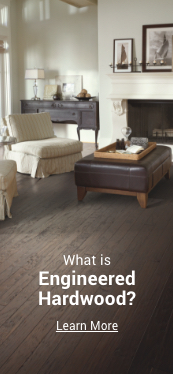

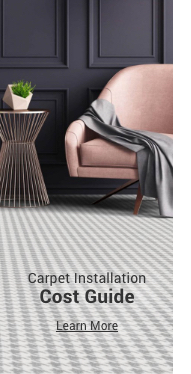
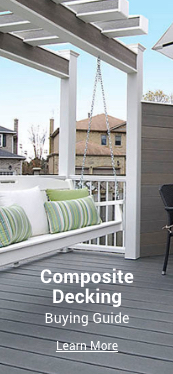

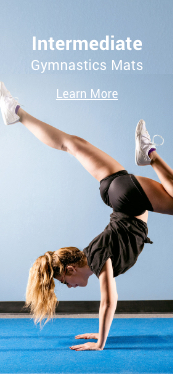
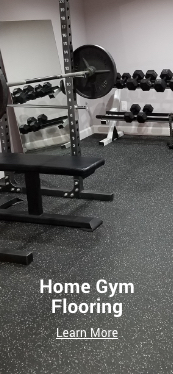

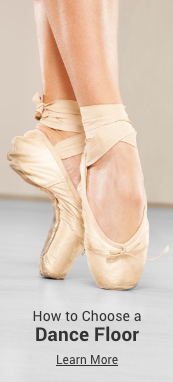
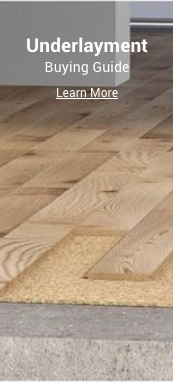

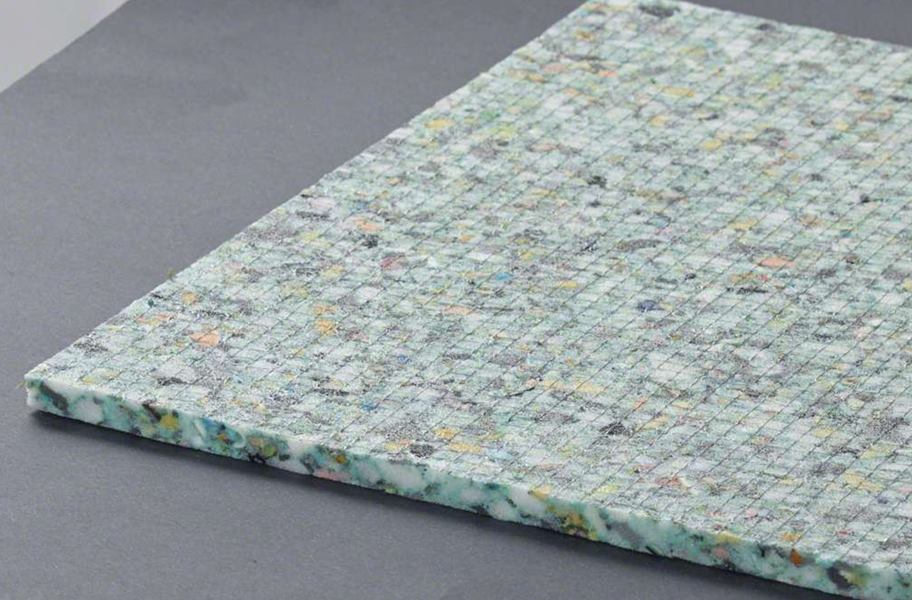
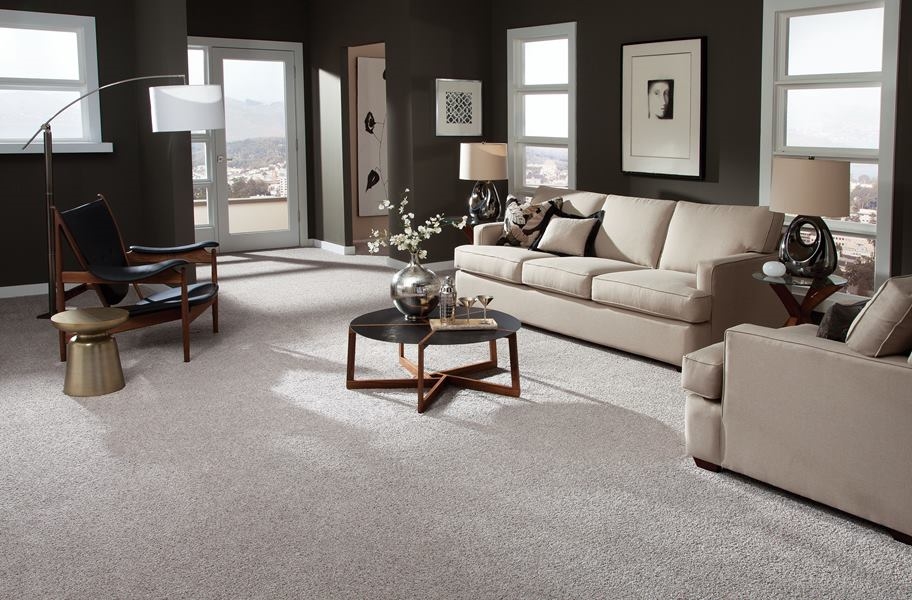
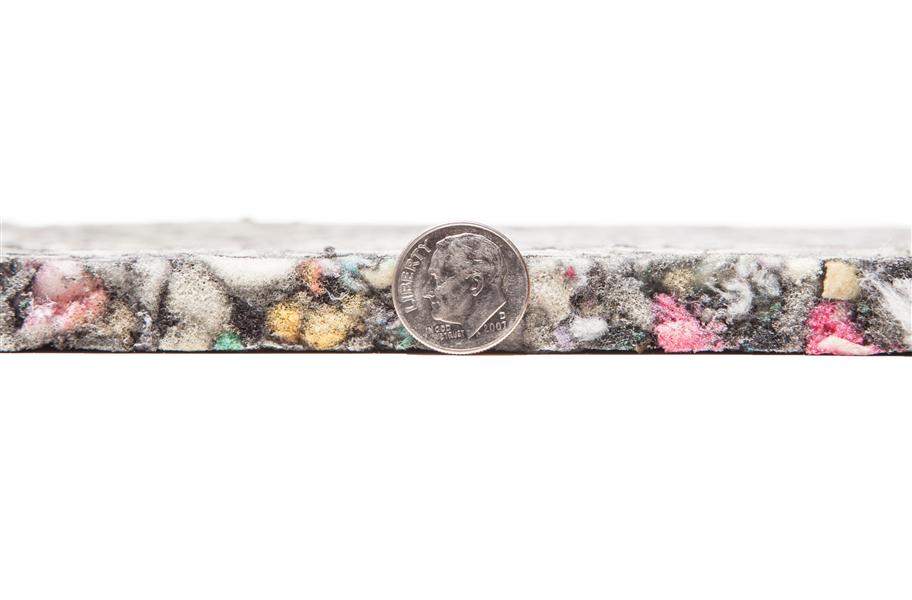
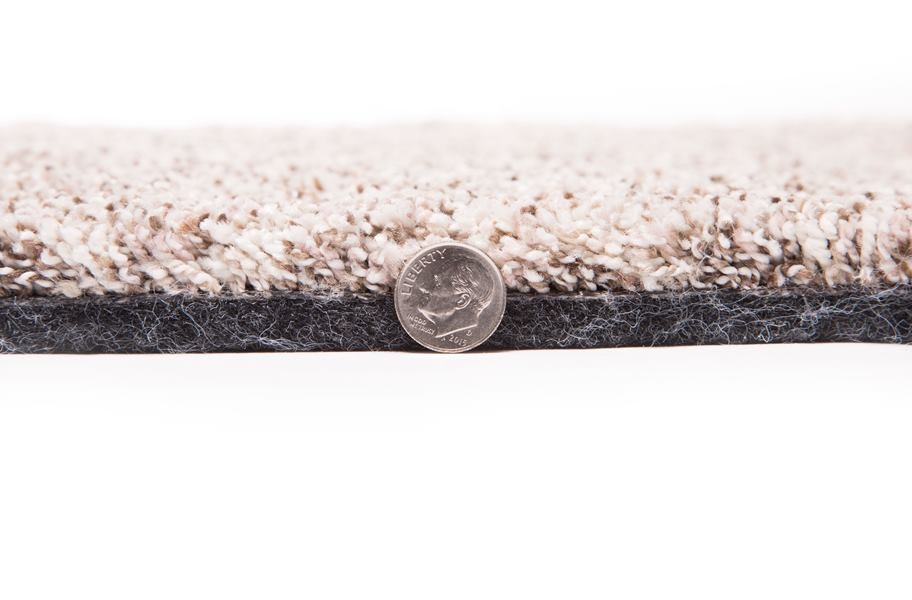
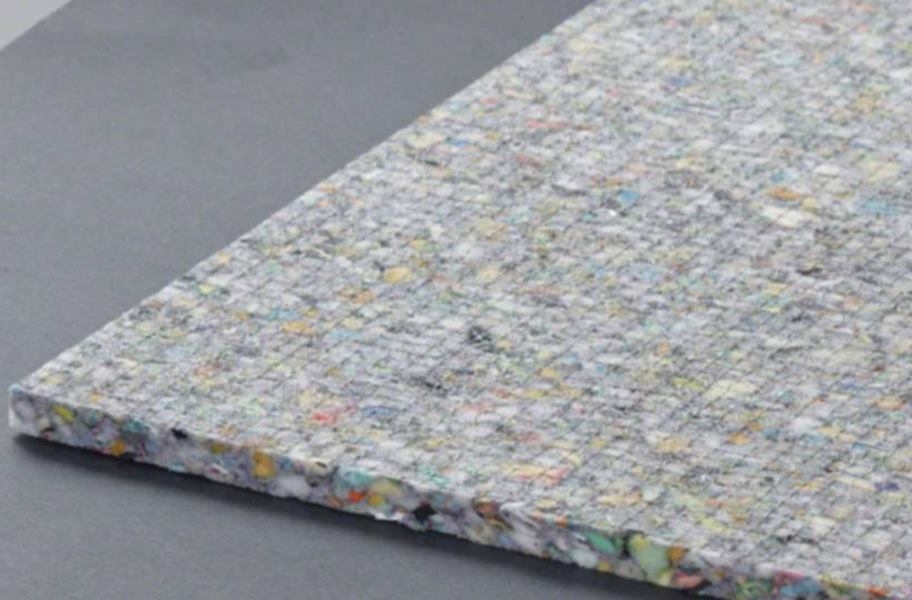
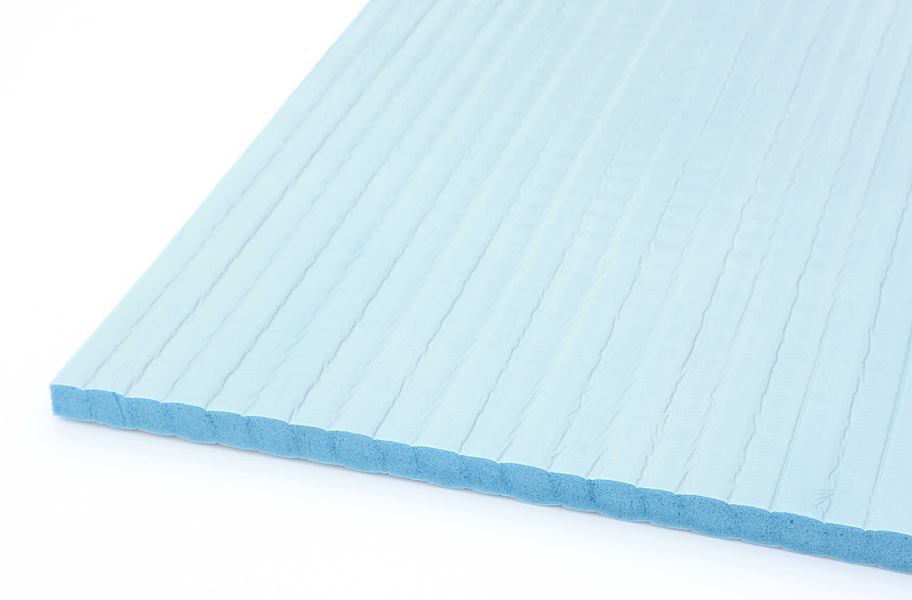
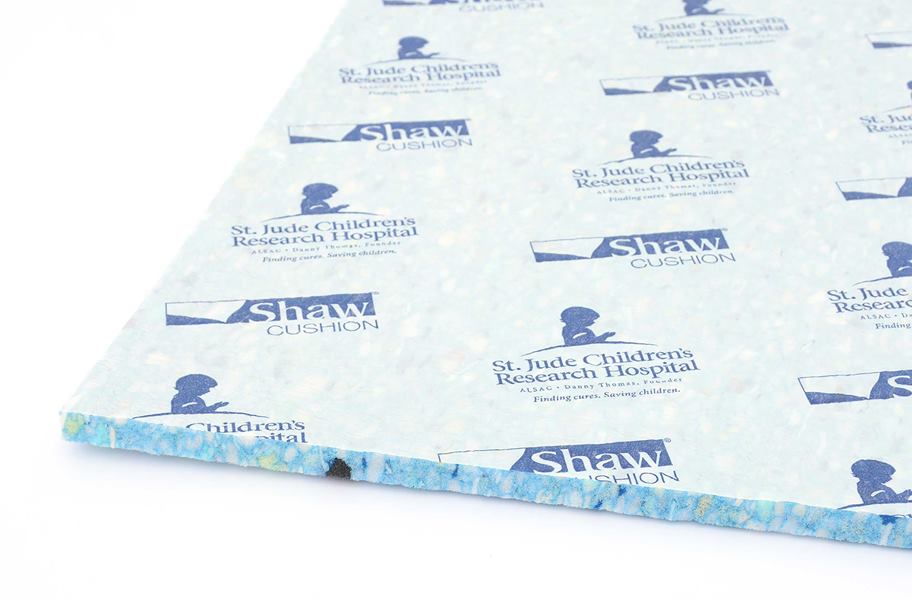
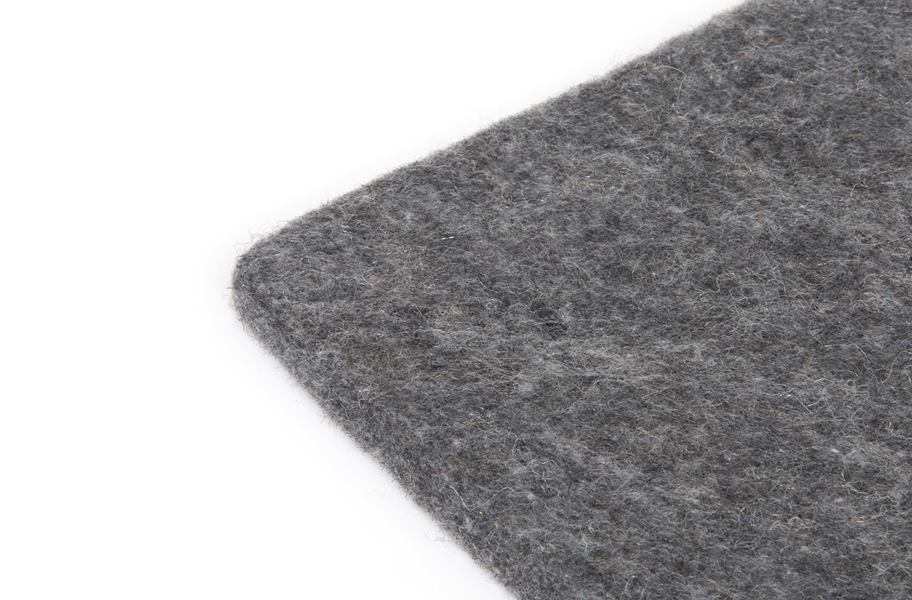
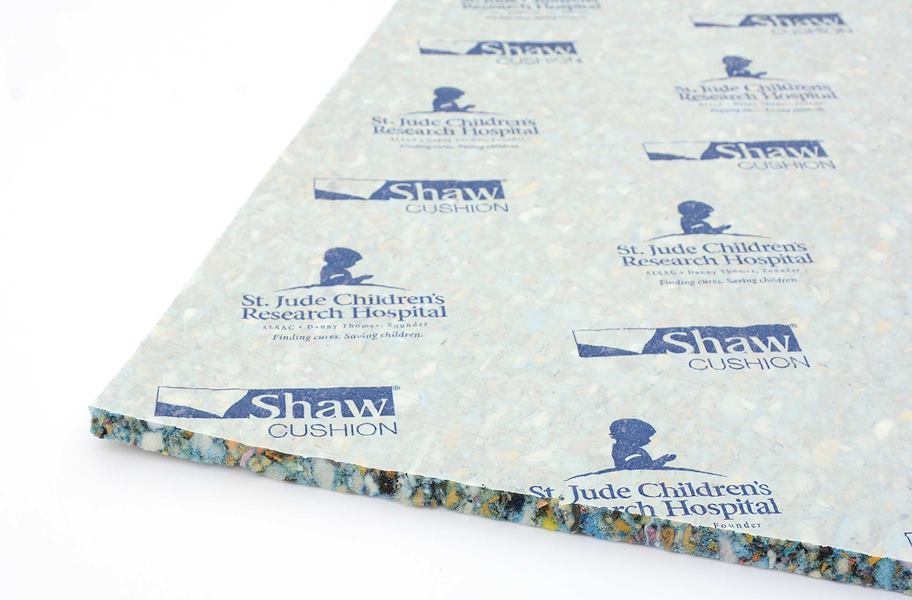
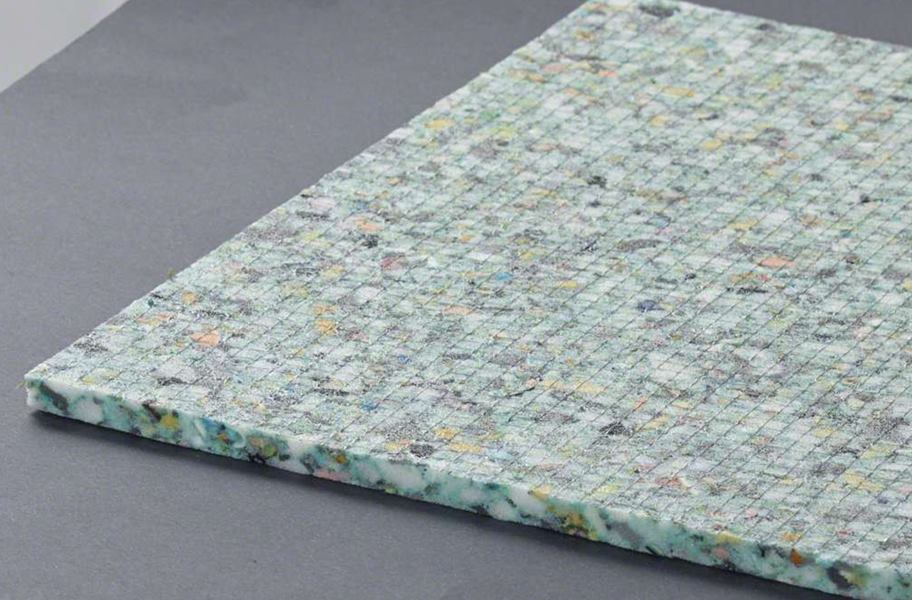
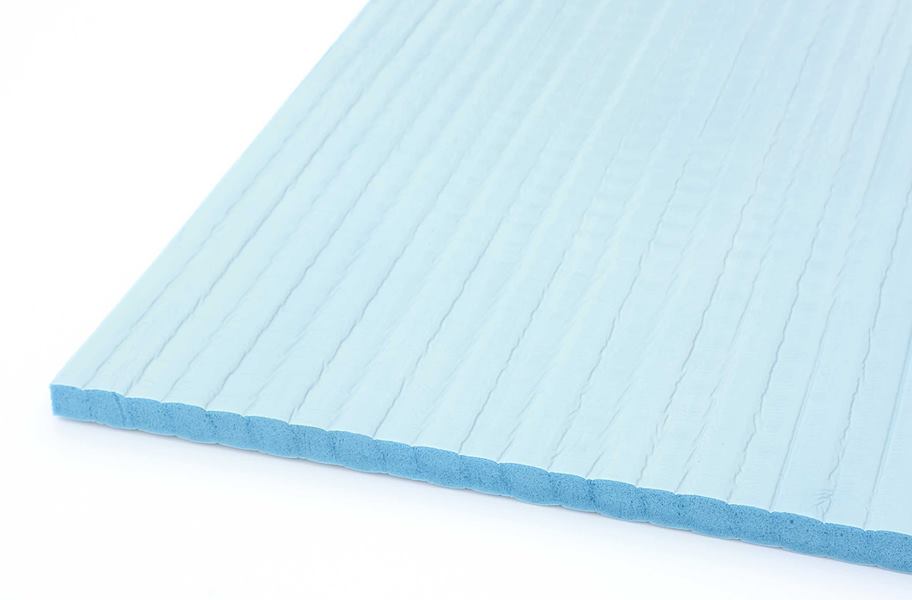
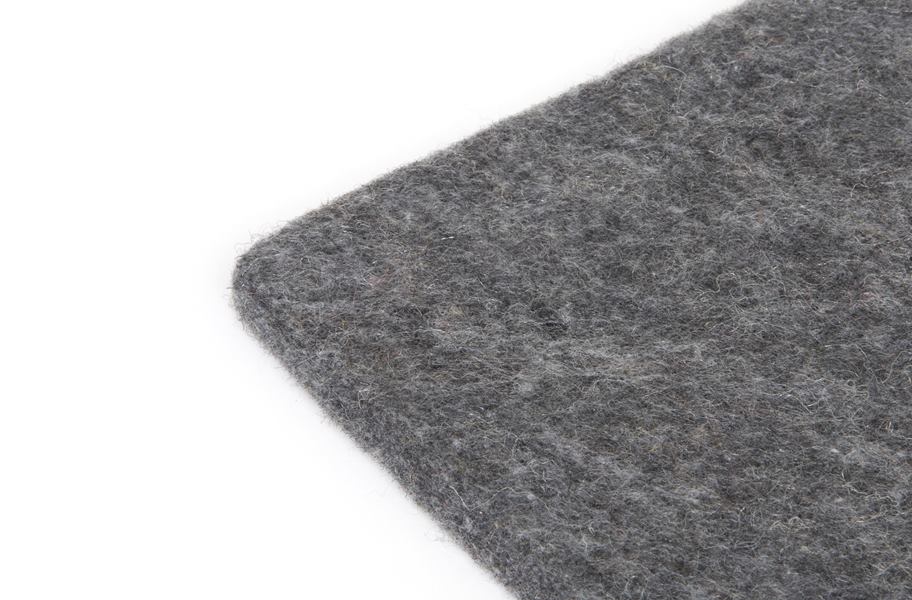


Totally agree with your carpet padding concert unnaturally before reading your post raven thought how much carpet padding importance. Thank give us such a wonderful information carpet longer life supporting tips.
Thank you!
Is there a better carpet pad for installation on a concrete slab foundation?
Hello Charles,
Thank you for your question! All of our carpet padding is suitable to use over a concrete subfloor. If you’re looking for some extra comfort, consider high-density carpet pads such as these: https://www.flooringinc.com/underlayments/all.html#!filter=380,976
I hope this helps. Get in touch if you have any questions!
My builder installed the carpet and pad a year ago. The pad is defective and they are going to replace it. However, they say there is no damage to the carpet so it won’t be replaced. I feel as if there has to have been some breakdown from the hard spots on the pad to the carpet. Can you help?
Hello Barbara!
Thank you for your question. Whether or not you need to replace the carpet depends on its condition. Carpet padding can definitely be replaced without needing to replace the carpet if the carpet is still in good condition. If the carpet isn’t stained, broken, or severely worn than it should be fine to re-use. However, if you notice any damage to the carpet, then you may want to replace it.
I hope this helps! Please feel free to reach out if you have any other questions.
Hello there! I could have sworn I’ve been to this blog before but after browsing through some of the post I realized it’s new to me. Nonetheless, I’m definitely delighted I found it and I’ll be book-marking and checking back frequently!
This actually answered my drawback, thank you!